
 <<
Mar 15| HISTORY
“4” “2”DAY
|Mar 17 >>
<<
Mar 15| HISTORY
“4” “2”DAY
|Mar 17 >>Events, deaths, births, of MAR 16
[For Mar 16 Julian go to Gregorian date: 1583~1699: Mar 26 — 1700s: Mar 27 — 1800s: Mar 28 — 1900~2099: Mar 29]

 <<
Mar 15| HISTORY
“4” “2”DAY
|Mar 17 >> <<
Mar 15| HISTORY
“4” “2”DAY
|Mar 17 >>Events, deaths, births, of MAR 16 [For Mar 16 Julian go to Gregorian date: 1583~1699: Mar 26 — 1700s: Mar 27 — 1800s: Mar 28 — 1900~2099: Mar 29] |
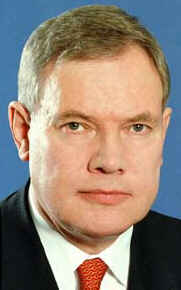 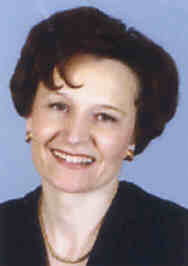 On
a March 16: On
a March 16:2003 National elections in Finland. The opposition Center Party, led by Anneli Jäätteenmäki, 48 [photo >], receive slightly more votes than the Social Democrats of Prime Minister Paavo Lipponen, 62 [< photo], but far less than 50%, so that it will need the parliamentary support of some of the other 16 parties in order to form a government. 2001 The National Catholic Reporter cover story informs on several reports written by senior members of women’s religious orders and by a US priest. They assert that sexual abuse of nuns by priests, including rape, is a serious problem, especially in Africa and other parts of the developing world. The reports allege that some Catholic clergymen exploit their financial and spiritual authority to gain sexual favors from religious women, many of whom, in developing countries, are culturally conditioned to be subservient to men. The reports say that priests at times demand sex in exchange for favors, such as permission or certification to work in a given diocese. In Africa particularly, a continent ravaged by HIV and AIDS, young nuns are sometimes seen as safe targets of sexual activity. In a few extreme instances, according to the documentation, priests have impregnated nuns and then encouraged them to have abortions. 2000 In Atlanta, Black sheriffs deputies Ricky Kinchen and Aldranon English go in the evening to serve an old arrest warrant on Jamil Abdullah al-Amin (former H. Rap Brown, Black activist). Al-Amin shoots the two deputies. Kinchen dies the next day. English 1999 El índice Dow Jones (DJI) de Wall Street alcanza los 10'000 puntos por primera vez en sus 114 años de historia.recovers and testifies in Al-Amin's trial which results in his conviction on 09 March 2002. 1998 Rwanda, with 125'000 suspects for 500'000 murders, began mass trials for the country's 1994 genocide. 1998 La Iglesia Católica realiza un "acto de arrepentimiento" y de confraternización con todas la religiones, especialmente el judaísmo, al pedir perdón públicamente por su parte de responsabilidad "no directa" en "una de las mayores tragedias de nuestro siglo", como fue el holocausto judío durante la Segunda Guerra Mundial. 1998 Hasbro purchases the rights to more than seventy-five Atari video games popular in the early 1980s, including Missile Command, Centipede, Pole Position, Pong, Combat, and Breakout. Hasbro had already had success in 1997 with an updated version of the vintage game Frogger. 1997 Se celebran elecciones legislativas y municipales en El Salvador, en las que ARENA, el partido gobernante desde 1989, sufre un revés en las urnas ante el avance del frente guerrillero FMLN (Frente Farabundo Martí de Liberación Nacional), que se sitúa como segunda fuerza dentro del mapa político del país. 1996 In his weekly radio address, President Bill Clinton accused the Republican-controlled House of bowing to "the back-alley whispers of the gun lobby" by gutting anti-terrorism legislation he'd submitted in response to the Oklahoma City bombing. 1996 For the first time, ordinary citizens were allowed inside the central archives of the Stasi, the former East German secret police. |
| 1995 IBM releases its annual report not only in print,
but also on the Internet and on CD-ROM. The CD-ROM has 15 minutes of video,
including an interview with Chairman Lou Gerstner, Jr., and an original
soundtrack. The Web version offers photos, graphics, sound, and video. 1995 Con casi 130 años de retraso, la esclavitud queda abolida en todo Estados Unidos: ratificación unánime por el estado de Mississippi de la XIII enmienda constitucional (18 Dec 1865), que la prohíbe. 1994 España es, a esta fecha, el país europeo más afectado por el SIDA, con 22'655 casos acumulados desde 1981.
|
| 1988
Reagan orders US troops into Honduras.
^top^ As part of his continuing effort to put pressure on the leftist Sandinista government in Nicaragua, President Ronald Reagan orders over 3000 US troops to Honduras, claiming that Nicaraguan soldiers had crossed its borders. As with so many of the other actions taken against Nicaragua during the Reagan years, the result was only more confusion and criticism. Since taking office in 1981, the Reagan administration had used an assortment of means to try to remove the leftist Sandinista government of Nicaragua. President Reagan charged that the Sandinistas were pawns of the Soviet Union and were establishing a communist beachhead in the Western Hemisphere, though there was little evidence to support such an accusation. Nonetheless, Reagan's administration used economic and diplomatic pressure attempting to destabilize the Sandinista regime. Reagan poured millions of dollars of US military and economic aid into the so-called "Contras," anti-Sandinista rebels operating out of Honduras and Costa Rica. By 1988, however, the Contra program was coming under severe criticism from both the American people and Congress. Many Americans came to see the Contras as nothing more than terrorist mercenaries, and Congress had acted several times to limit the amount of US aid to the Contras. In an effort to circumvent Congressional control, the Reagan administration engaged in what came to be known as the Iran-Contra Affair, in which arms were illegally and covertly sold to Iran in order to fund the Contras. This scheme had come to light in late 1987. Indeed, on the very day that Reagan sent US troops to Honduras, his former national security advisor John Poindexter and former National Security staffer Lt. Col. Oliver North were indicted by the US government for fraud and theft related to Iran-Contra. The New York Times reported that Washington, not Honduras, had initiated the call for the US troops. In fact, the Honduran government could not even confirm whether Sandinista troops had actually crossed its borders, and Nicaragua steadfastly denied that it had entered Honduran territory. Whatever the truth of the matter, the troops stayed for a brief time and were withdrawn. The Sandinista government remained unfazed. |
| 1988
North and Poindexter indicted in Iran-Contra affair
^top^ As part of the Iran-Contra affair, Lieutenant Colonel Oliver L. North and Vice Admiral John M. Poindexter of the National Security Council (NSC) are indicted on charges of conspiracy to defraud the United States. The Iran-Contra affair first became public in late 1986, when it was revealed that members of the Reagan administration, the Central Intelligence Agency (CIA), and the armed forces were illegally selling arms to Iran for two purposes: to help secure the release of American hostages held in Lebanon by pro-Iranian groups, and to raise funds for the illicit support of the Contras in their guerrilla war against Nicaragua's Communist government. Under orders from President Ronald Reagan, Lieutenant Colonel North directed the operation and Vice Admiral Poindexter helped the NSC raise private and foreign funds for the Contras. Revelations about the Iran-Contra connection caused outrage in Congress, which in 1983 had passed the Boland amendments prohibiting the Defense Department, the CIA, or any other government agency from providing military aid to the Contras. In December 1986, Lawrence E. Walsh was named special prosecutor to investigate the matter, and over the course of the investigation thirteen top White House, State Department, and intelligence officials were found guilty on charges ranging from perjury to conspiracy to defraud the United States. Although President Reagan was heavily implicated by Oliver North in the televised congressional hearings and by Walsh in his final Iran-Contra report, neither he nor Vice President George Bush was directly indicted in the subsequent criminal trials. Oliver North, who was convicted on charges of obstruction of justice and destruction of evidence, eventually had all his convictions overturned by a federal judge because the prosecutors had used testimony that North had given to Congress under immunity. Poindexter would also be convicted and have his conviction overturned. Also indicted on charges relating to the Iran-Contra affair are retired Air Force Maj. Gen. Richard V. Secord and his business partner, Albert Hakim. These two would be sentenced to probation. |
| 1987 Primera entrega de los premios Goya en España. 1984 William Buckley, the CIA station chief in Beirut, is kidnapped; he would die in captivity. 1981 Los ministros de Asuntos Exteriores de la CE acuerdan en Bruselas el establecimiento de un pasaporte único europeo. 1978 Italian politician Aldo Moro is kidnapped by left-wing urban guerrillas, who later would murder him. — Aldo Moro, líder del partido político italiano Democracia Cristiana, es secuestrado justo antes de su investidura como Presidente de la República. 1977 Author Alex Haley files suit against Doubleday, publisher of Roots, for not promoting the book and failing to land a competitive paperback contract. The book was made into a television miniseries, which attracted some 100 million viewers when it aired in January 1977.
1966 General Motors produces its 100'000'000th car, an Oldsmobile Toronado. 1958 the Ford Motor Company produces its 50'000'000th car, a Thunderbird.
1944 II Guerra Mundial: un intenso bombardeo aliado deja casi destruido el histórico monasterio de Monte Cassino (Italia meridional) que las tropas alemanas habían convertido en plaza fuerte.. 1939 Germany occupies Czechoslovakia. 1935 Hitler orders German rearmament, violating Versailles Treaty. — El Gobierno alemán rechaza las cláusulas militares del Tratado de Versalles y proclama su libertad de acción sobre rearme. 1926 Robert Hutchings Goddard launches first liquid fuel rocket, it travels 56 meters. — Robert Hutchings Goddard, físico estadounidense, hace volar el primer misil a combustible líquido de la historia en una llanura cerca de Auburn (Massachusetts). |
1921 Los bolcheviques, tras un acuerdo con Turquía, se apoderan de Armenia. 1909 A US federal court rules in Harper and Bros. v. Kalem Co. that the movie studio's 1907 production of Ben-Hur, based on the novel Ben-Hur: A Tale of the Christ by Lew Wallace, and filmed without the author's permission, was a copyright violation. Kalem pays the author's estate $25'000 in damages. 1882 US Senate ratifies treaty establishing the Red Cross
1851 Firma del Concordato entre España y la Santa Sede para solucionar los problemas existentes entre el Estado y la Iglesia. 1836 The Republic of Texas approves a constitution. 1816 Llega a Le Havre el Elise, primer barco a vapor que cruzó el Canal de la Mancha. 1815 Willem I proclaimed king of the Netherlands, including Belgium 1621 First Indian appears at Plymouth, Massachusetts. 1560 Los hugonotes llevan a cabo la conjura de Amboise, cuyo objetivo era liberar al joven rey francés Francisco II y a la reina María Estuardo de la tutela de la familia Guisa. 1521 Portuguese navigator Ferdinand Magellan reached the Philippines, where he would be killed by natives the following month. 1517 Fin del quinto Concilio de Letrán. 1366 Enrique II se proclama rey de Castilla en la ciudad de Calahorra. 1309 Tras abdicar Muhammad III, su hermano Nasr se convierte en el cuarto rey nazarí de Granada. 1190 Crusades begin massacre of Jews of York England 1079 Iran adopts solar Hijrah calendar --597 BC According to certain archaeological calculations, the first conquest of Jerusalem by Babylonian King Nebuchadnezzar occurred. In the Bible, the event is recorded in 2 Kings 24:1ff. and in 2 Chronicles 36:5-8. It is also implied in the early chapters of Jeremiah and Ezekiel. |
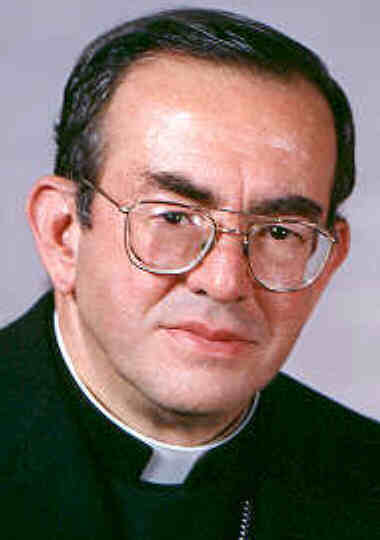 Deaths
which occurred on a March 16: Deaths
which occurred on a March 16: 2002 Isaias Duarte Cancino, Archbishop of Cali, Colombia [photo >] The archbishop dies shortly after being shot at point-blank range in the mouth, skull, and chest as he left the Buen Pastor Church in one of the poorest neighborhoods of Cali (barrio Ricardo Balcázar in the Aguablanca district) at 20:30 after celebrating an evening mass wedding of 100 couples that had started at 19:00. The two murderers, about 20 years old at most, escape on a motorbike. At 16:00, the pastor of Buen Pastor, Father Oscar de la Vega, had phoned the police after seeing some suspicious individuals asking for protection, but none was forthcoming. The archbishop had denounced drug-money corruption in election campaigns, and leftist guerrillas and far-right paramilitary outlaws involved in Colombia's 38-year-old war which claims about 3500 mainly civilian lives a year. Archbishop Duarte was born on 15 February 1939. While residing at the Colegio Pio Latino Americano (a classmate of JFC) he studied teology at the Gregorian University in Rome, where he was ordained a priest on 01 December 1963. He was consecrated as a bishop (auxiliary of Bucaramanga) on 17 June 1985. On 18 June 1988 he was appointed the first bishop of the new diocese of Apartadó. On 19 August 1995 he was appointed Archbishop of Cali. The death of Duarte, the highest-ranking Catholic clergyman killed during decades of violence in Colombia, evoked the memories of other Latin American Roman Catholic leaders who were assassinated. El Salvador Archbishop Oscar Arnulfo Romero (born 15 August 1917), shot by a sniper on 24 March 1980, had decried the brutality of the country's military during its civil war. Guatemalan Bishop Juan José Gerardi was bludgeoned to death on 26 April 1998 after accusing the military of human rights abuses during its civil war. In Mexico, Cardinal Juan Jesus Posadas Ocampo (born 10 Nov 1926) was killed on 24 May 1993, allegedly by drug traffickers 2001 Stephen Kanyan, 32, by a crocodile, while he and his two-year-old son are bathing in a river in Batang Lupar, southeast of Kuching, capital of the Malaysian state of Sarawak on Borneo island. A crocodile attacks! Kanyan pushes the boy to safety before being dragged underwater and eaten by the animal. In consequence police are issued two permits to hunt crocodiles at least 4.5 meters long (they are are normally protected in Sarawak). In February 2001, a police sharpshooter shot a crocodile that had attacked and eaten a child in the Niah River, in eastern Sarawak. 2001 Yulia Fomina, 27, flight attendant, a Turkish construction worker passenger, and one of the three Chechen hijackers, by gunshot from Saudi special forces storming the Tupolev aircraft on the tarmac of Medina airport. The hijackers, armed only with knives and no firearms, had, the previous day, seized an Istanbul-Moscow flight with 162 passengers and 12 crew members on board and forced the pilot to divert to Medina. — Veintidós horas después de que un comando checheno secuestrara en Turquía un avión ruso con destino a Moscú y desviara su trayectoria hacia Arabia Saudí, las fuerzas especiales de Riad asaltan la nave. En la precipitada operación de rescate resultan muertas tres personas. 2000 Thomas Wilson Ferebee, 81, the Enola Gay bombardier who dropped the atomic bomb on Hiroshima, dies in Windermere, Florida. 1998 Benjamín Spock, pionero de la pediatría moderna. 1992 Rocard, mathematician. 1989 Jesús María de Leizaola, político y lehendakari vasco. 1979 Jean Monnet, político francés, considerado uno de los "padres de Europa" y que fue primer presidente de la C.E.C.A.
|
1955 (or 17 March) Nicolas de Staël, French painter
born on 05 January 1914. — LINKS
1935 John James Richard MacLeod, médico irlandés, descubridor de la insulina. 1933 Alfréd Haar, mathematician. 1930 Miguel Primo de Rivera, dictatorial ex-presidente del Gobierno español. 1925 August von Wassermann, médico alemán. 1922 Halsted, mathematician. 1922 Robert Russ, Austrian artist born on 07 July 1847. 1914 Gaston Calmette, editor of Le Figaro, killed by Mme Caillaux. 1910 Juan de Dios Peza, poeta mexicano.
1881 Francisco “Chico” Forster, 40, shot by his lover Lastania Abarta, 18, in Los Angeles, after he reneged on promise to marry her. Abarta would plead that this caused female hysteria in her, and be acquitted. 1841 Savart, mathematician. 1838 Nathaniel Bowditch, 64, mathematician, astronomer, and navigation expert. 1837 baron François-Xavier Fabre, French painter specialized in Portraits, born on 01 April 1766 [no fooling!]. — LINKS 1827 Jean Baptiste Joseph Fourier, matemático francés. 1792 Gustavo III, rey de Suecia. 1736 Giovanni Battista Pergolesi, compositor italiano. 1639 Pieter Deneyn (or de Neyn), Dutch artist born on 16 December 1597. |
| Births
which occurred on a March 16: 1936 Francisco Ibáñez, dibujante español, autor de "Mortadelo y Filemón" y otros personajes del cómic infantil. 1928 Ramón Barce, músico y escritor español. 1927 Daniel Patrick Moynihan UN ambassador/(Sen-D-NY) 1924 Marinero en tierra, de Rafael Alberti, se publica.
1903 Mike Mansfield (Sen-D-Mont) majority whip. 1893 Ramón de la Cadena y Brualla, marqués de la Cadena, escritor y periodista español. 1892 César Abraham Vallejo, poeta peruano. 1892 James Petrillo, US labor leader who died on 23 October 1984. 1881 Barnum and Bailey Circus debuts. 1881 Pierre Paulus du Châtelet, Belgian artist who died in 1959. 1880 Paul Jouve, French artist who died in 1973. 1878 Reza Khan Pahlavi. Iranian Shah (1925-41) He died on 26 July 1944. 1868 (Julian date: go to 28 March Gregorian) Aleksey Maksimovich Peshkov “Maksim Gorky”
1846 Gösta Mittag-Leffler, mathematician. |
||||||||
| 1839
René-François-Armand "Sully" Prudhomme, in Paris.
^top^ French poet who was a leading member of the Parnassian movement, which sought to restore elegance, balance, and aesthetic standards to poetry, in reaction to the excesses of Romanticism. He was awarded the first Nobel Prize for Literature in 1901. He wrote Stances et poèmes (1865) which contains his best known poem, “Le vase brisé”, Les Épreuves (1866), and Les Solitudes (1869). Two of his best known philosophical works in verse are La Justice (1878) and Le Bonheur (1888), the latter an exploration of the Faustian search for love and knowledge. Fils de commerçants très aisés, ingénieur au Creusot. Bientôt déçu par le travail, il retourna à Paris pour y faire son droit. Après ses études, il fut rebuté par un stage chez un notaire et décida de se consacrer (grâce sa fortune personnelle) à la poésie. Il avait vingt-six ans lorsqu'il publia son premier recueil : Stances et Poèmes (1865). Ce livre, favorablement accueilli par Sainte-Beuve, eut un succès immédiat. “Le Vase brisé” [La rompita vaso] était récité partout. Ce succès permit à Sully Prudhomme de collaborer au Parnasse fondé par Leconte de Lisle, collaboration qui accentua encore son souci de la perfection formelle. Avec Les Solitudes (1869), sa poésie commença à prendre un caractère philosophique. Cette préoccupation s'affirma par la publication d'une traduction en vers (1869) de De la nature des choses de Lucrèce. Durant le siège de Paris, Sully Prudhomme s'enrôla dans la garde mobile, et le froid, les fatigues et les privations lui valurent une attaque de paralysie dont il ressentit les conséquences toute sa vie. Cette expérience et ses réflexions sur la guerre sont le thème d'un livre paru sous le titre : Impressions de guerre. Son oeuvre de «poésie philosophique» se poursuivit avec Les Destins (1872), mais il revint un moment à une poésie plus intime et plus sentimentale avec Les Vaines Tendresses ( 1875). Il entreprit ensuite deux très longs poèmes qui devaient représenter sa somme philosophique: La Justice (1878), est une sorte d'enquête morale et sociale; Le Bonheur (1888) est une vaste épopée symbolique. La préciosité et le verbalisme marquent ses deux autres recueils, Le Prisme et La Révolte des fleurs (1886). Sully Prudhomme fut élu à l'Académie française en 1881 et son oeuvre, où figurent également des essais d'esthétique, de philosophie et de critique, fut couronnée par le premier Prix Nobel le 10 décembre 1901, prix dont il consacra le montant à la fondation d'un prix de poésie décerné sous l'égide de la Société des gens de lettres. Sully Prudhomme est mort à Châtenay-Malabry (Hauts-de-Seine actuels) le 7 septembre 1907. |
Le vase briséLe vase où meurt cette verveine D'un coup d'évantail fut fêlé; Le coup dut l'effleurer à peine : Aucun bruit ne l'a révélé. Mais la légère meurtrissure, Mordant le cristal chaque jour, D'une marche invisible et sûre, En a fait lentement le tour. Son eau fraîche a fui goutte à goutte, Le suc des fleurs s'est épuisé; Personne encore ne s'en doute, N'y touchez pas, il est brisé. Souvent aussi la main qu'on aime, Effleurant le cœur, le meurtrit; Puis le cœur se fend de lui-même, La fleur de son amour périt; Toujours intact aux yeux du monde, Il sent croître et pleurer tout bas Sa blessure fine et profonde; Il est brisé, n'y touchez pas. |
| PRUDHOMME ONLINE: Clé: V Les vaines tendresses — S Les solitudes — E Epaves — R Les épreuves — P Stances et poèmes — I La vie intérieure |
|
| 1802
United States Military Academy established
^top^ At West Point, New York, the United States Military Academy — the first military school in the United States — is founded by Congress for the purpose of educating and training young men in the theory and practice of military science. Located on the high west bank of the Hudson River, West Point was the site of a Revolutionary-era fort built to protect the Hudson River Valley from British attack. In 1780, Patriot General Benedict Arnold, the commander in charge of the fort, agreed to surrender West Point to the British in exchange for six thousand pounds. However, the plot was uncovered before it fell into British hands, and Arnold fled to British protection. In 1802, the US Military Academy was established at West Point, and in 1812, growing threat of another war with Great Britain resulted in congressional action to expand the academy’s facilities and increase the West Point corps. Beginning in 1817, the US Military Academy was reorganized by superintendent Sylvanus Thayer--later known as the "father of West Point"--and the school became one of the nation’s finest sources of civil engineers. During the Mexican-American War, West Point graduates filled the leading ranks of the victorious US forces, and with the outbreak of the Civil War, former West Point classmates regrettably lined up against either in the defense of their native states. In 1870, the first African American cadet was admitted into the United States Military Academy, and in 1976, the first female cadets. The academy is now under the general direction and supervision of the department of the US Army, and has an enrollment of about 4300 students. |
 1789
Georg
Simon Ohm, German physicist and mathematician.
1789
Georg
Simon Ohm, German physicist and mathematician. Holidays
Surinam : Holi Phagwah Umatilla,
OR : Curlew Day
Holidays
Surinam : Holi Phagwah Umatilla,
OR : Curlew Day  Christian
: Feast of fictional
St Urho, “patron of Finland” ^top^
Christian
: Feast of fictional
St Urho, “patron of Finland” ^top^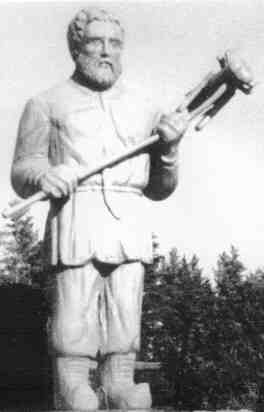
 According to the legend, St. Urho was hailed into existence in St. Patrick's party
in the 17th of March in 1956. St. Patrick an Irish legend, who've been claimed
to expel the snakes from Ireland. Richard Mattson, a departmental manager at the
Ketola department store in Virginia really knocked this story down. He told immense
stories of a Finnish saint, who's spell drove the poisonous frogs out of Finland.
According to the legend, St. Urho was hailed into existence in St. Patrick's party
in the 17th of March in 1956. St. Patrick an Irish legend, who've been claimed
to expel the snakes from Ireland. Richard Mattson, a departmental manager at the
Ketola department store in Virginia really knocked this story down. He told immense
stories of a Finnish saint, who's spell drove the poisonous frogs out of Finland.
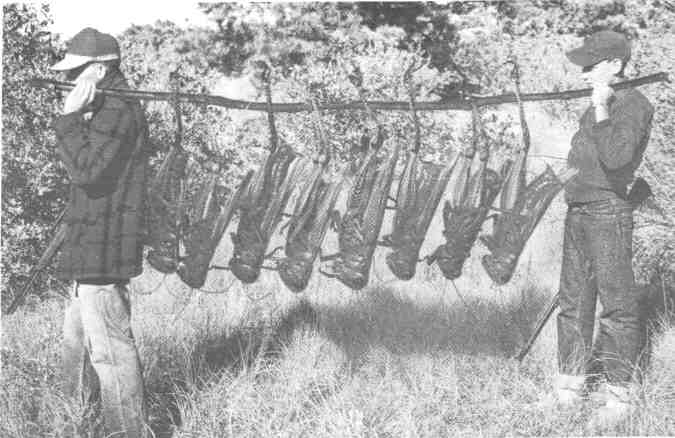 This photo, discoverd
in the Saint Urho Archives, shows two of the Saint's disciples carrying home the
day's hunt. Finnish historians consider that this picture shows a re-enactment
of a scene that occured just before the last Ice Age.
This photo, discoverd
in the Saint Urho Archives, shows two of the Saint's disciples carrying home the
day's hunt. Finnish historians consider that this picture shows a re-enactment
of a scene that occured just before the last Ice Age.
| Children's Book Titles that have not yet been used: ^top^ | |
|
'Crossing the Street With Your Eyes Closed' 'Strangers Have the Best Candy' 'The Little Sissy Who Snitched' 'Some Kittens Can Fly!' 'The Protocols of the Grandpas of Zion' 'Getting More Chocolate on Your Face' 'Where Would You Like to Be Buried?' 'Katy Was So Bad Her Mom Stopped Loving Her' 'The Attention Deficit Disorder Association's Book of Wild Animals of North Amer Hey! Let's Go Ride Our Bikes!' 'All Dogs Go to Hell' 'The Kids' Guide to Hitchhiking' 'When Mommy and Daddy Don't Know the Answer They Say God Did It' 'Garfield Gets Feline Leukemia' 'Dog Eats Dog in the Jungle Out There' 'Why Can't Mr. Fork and Ms. Electrical Outlet Be Friends?' 'Curious George Killed the Cat' 'Daddy Drinks Because You Cry' 'Mister Policeman Eats His Service Revolver' 'You Are Different and That's Bad' 'Why God Burned Down Disney Land' ‘Fun With Matches’ ‘Virginia Finds Out There is No Santa Claus’ ‘101 Ways to Skin a Cat’ ‘Bert, the Brave Playground Bully’ ‘A Monster Hides Under Your Bed’ ‘Little Bo-Peep Has Lost Her Mind.’ ‘Alice's Adventures in the Juvenile Justice System.’ ‘Babar, the Little Burglar Elephant.’ ‘A Child's Garden of Vice.’ ‘Aladdin and the Magic Drug.’ ‘Bambi and the NRA’ ‘The Lying King’ ‘Making Molotov Cocktails’ ‘The Vodka Babies’ ‘A Christmas Carjacking’ ‘Cockroach Soup and Other Easy Recipes’ |
‘Whiny the Poodle’ ‘The Enchanted Crack House’ ‘Grim Fairy Tales’ ‘The Magic School Bus Crashes’ ‘The Grinch Who Commercialized Christmas’ ‘Mother Goose in the Noose’ ‘Lassie, You Can Never Go Home Again’ ‘Driving Miss Daisy Crazy’ ‘Famous Child Criminals Who Beat the System’ ‘The Joy of Gangs’ ‘Alexander the Terrible, Horrible, No Good, Very Bad Boy’ ‘You'll Be Food For Worms’ ‘Gullible Travels’ ‘The Wonderful Wizard of Berchtesgarden’ ‘The Secret Garden of Mary Juana’ ‘A Pickpocket: Corduroy’ ‘The Mysterious Island Prison’ ‘Charlotte's Web of Deceit’ ‘Heroes of the Ku Klux Klan’ ‘The Pride of Prejudice’ ‘Easy Explosives You Can Make From Common Household Products’ ‘Secrets Children Are Not Supposed to Know’ ‘The Wall Street Jungle Book’ ‘Police, Teachers, Parents are the Enemy’ ‘Drugs for Fun and Profit’ ‘Your Rights Under the Fifth Amendment’ ‘Robbing Hood and His Merry Gang’ ‘Surefire Accusations You Can Make Against Adults’ ‘Johnny and Luther Htoo: Child Warriors of Myanmar’ ‘Old King Coal Was a Merry Old Polluter’ ‘Russian Roulette and Other Fun Games’ ‘Dr. Kevorkian's Do-It-To-Yourself Book for Kids’ ‘Uncle Peeping Tom's Cabin’ ‘Hari Potamoto and the Sarin Gas’ ‘Hairy Bettor and the One-Armed Bandit’ ‘The Little Engine That Could Run Over You’ ‘Medieval Tortures You Can Try on Your Little Sister’ |